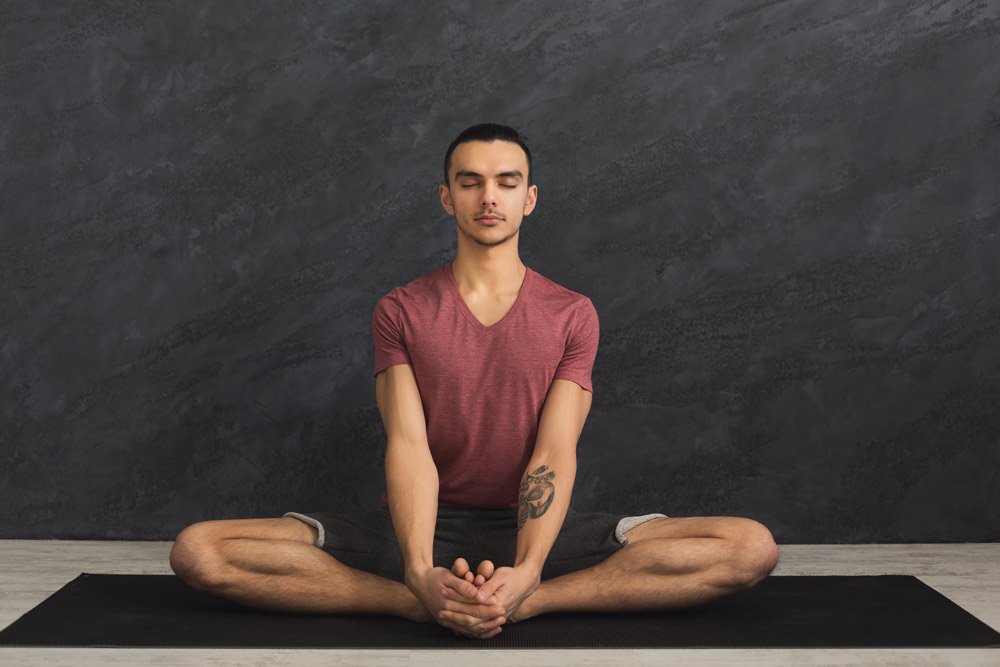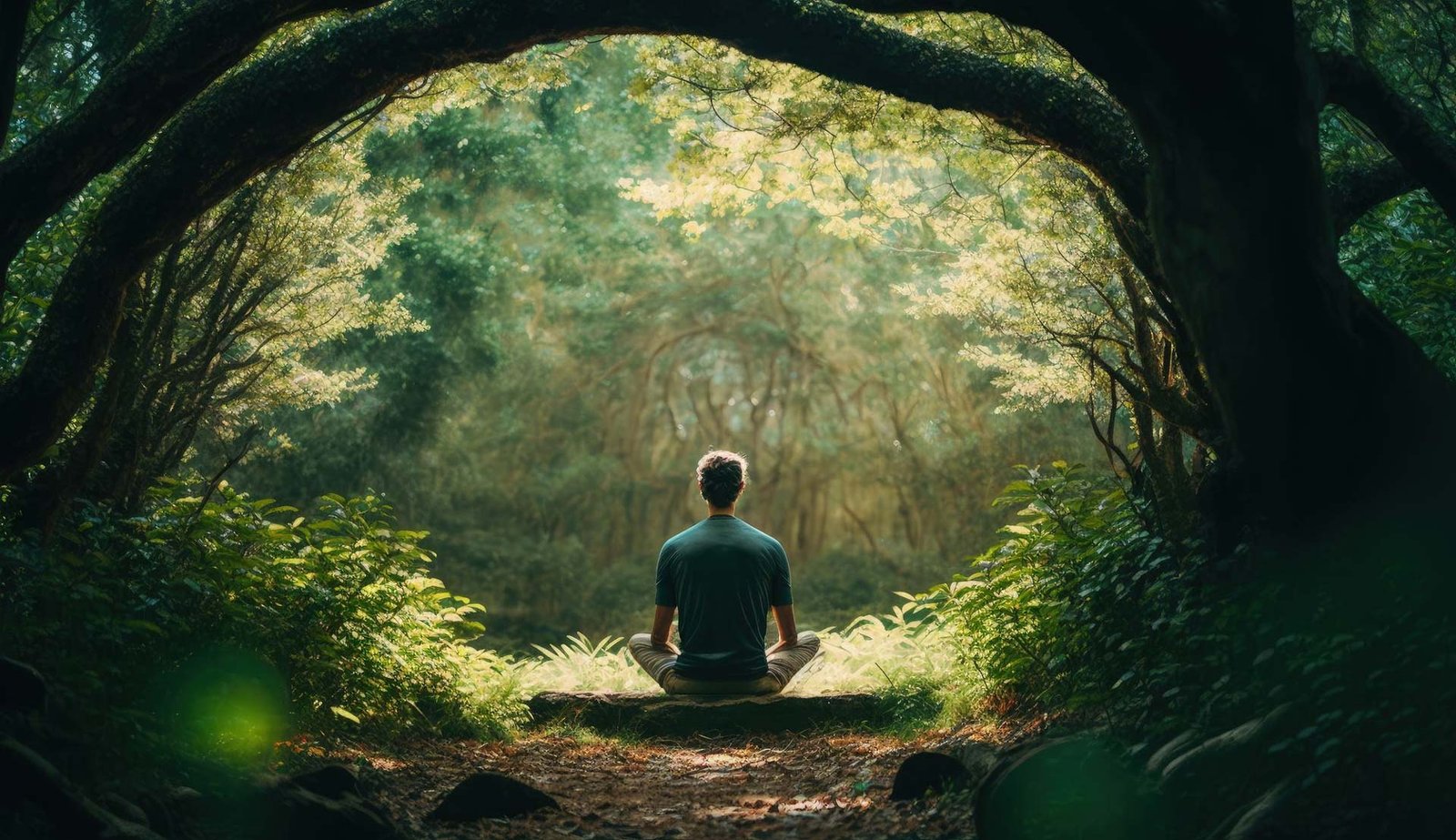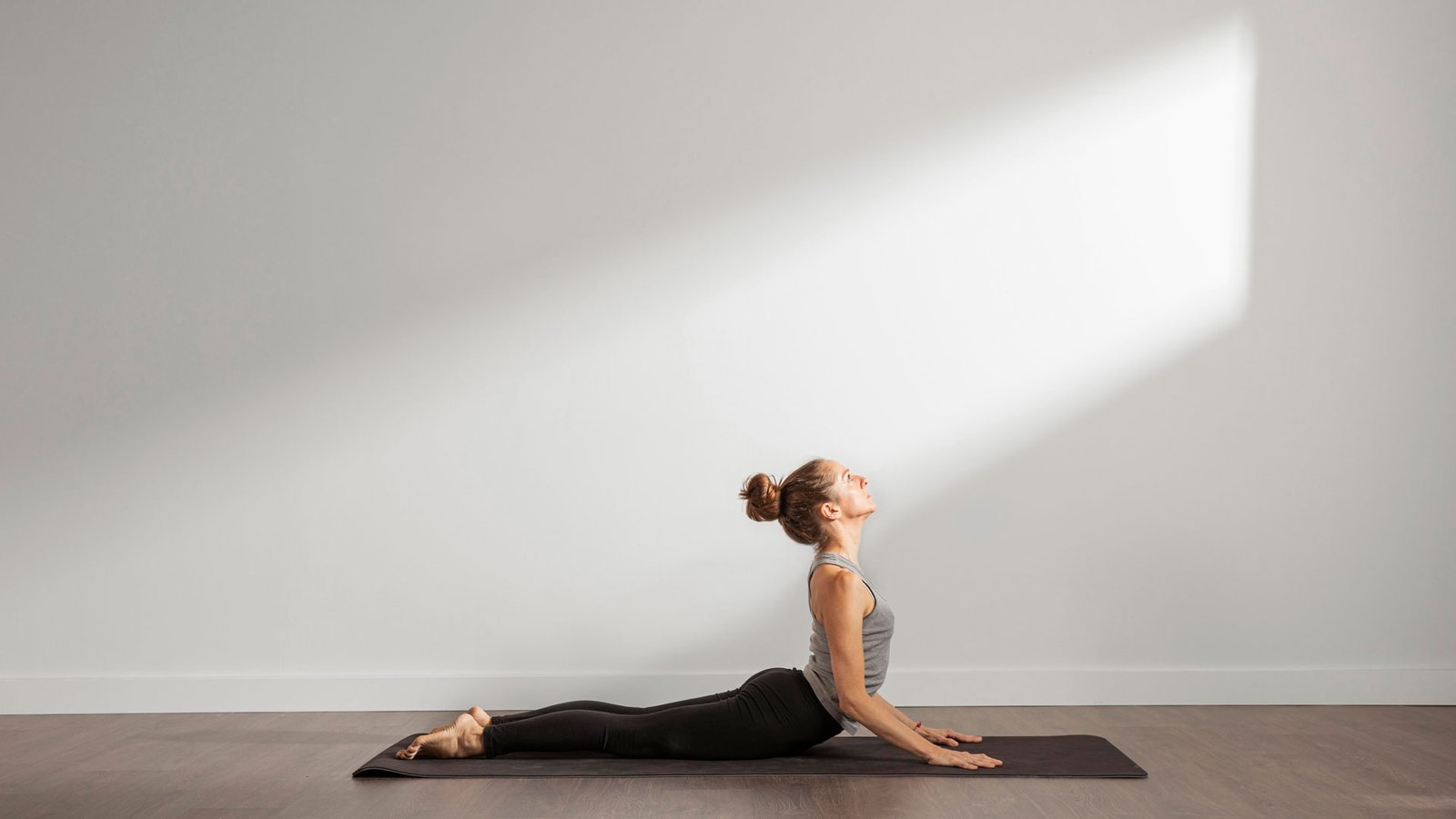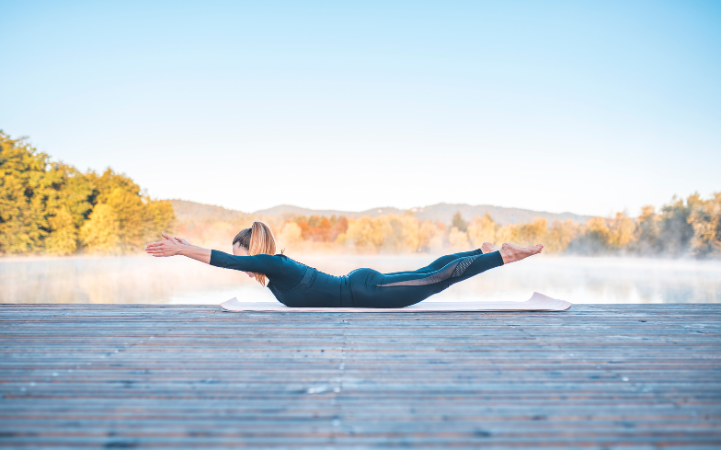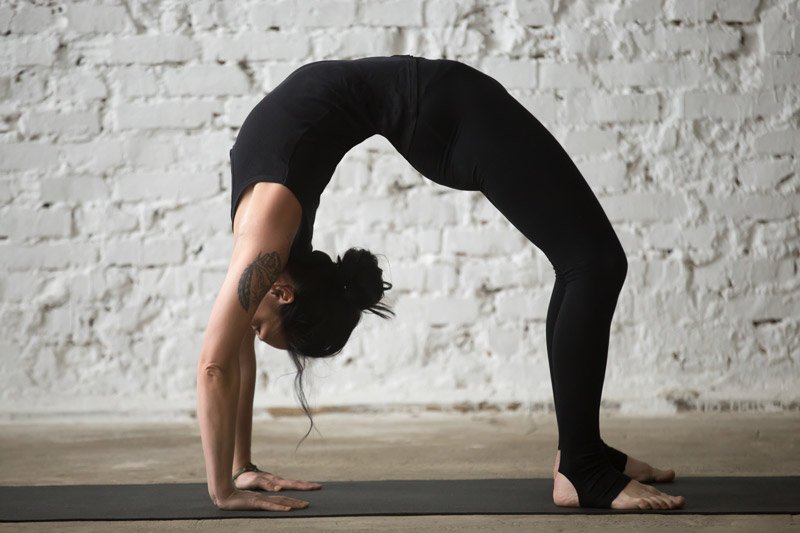Baddha Konasana, or the Bound Angle Pose, is a classic seated yoga posture that promotes flexibility, relaxation, and mindfulness. Derived from the Sanskrit words Baddha (bound), Kona (angle), and Asana (pose), this posture is also known as the Butterfly Pose due to the flapping motion often practiced in preparatory movements. Suitable for practitioners of all levels, Baddha Konasana offers a range of physical and mental benefits, making it a valuable addition to any yoga practice.
Steps to Perform Baddha Konasana
- Starting Position: Begin seated on the floor with your legs extended straight in front of you (Dandasana).
- Bring Your Feet Together: Bend your knees and draw your feet toward your pelvis. Press the soles of your feet together, allowing your knees to drop out to the sides.
- Hold Your Feet: Grasp your feet or ankles with your hands. Keep your back straight and your chest open.
- Adjust Your Position: Bring your heels as close to your pelvis as comfortable, ensuring you feel a stretch but no pain.
- Engage Your Thighs: Allow gravity to help your knees lower toward the floor. If necessary, gently press your thighs or knees downward with your elbows for a deeper stretch.
- Maintain Alignment: Keep your spine long and avoid hunching your shoulders. Focus on elongating your back.
- Hold the Pose: Stay in the position for 30 seconds to a few minutes, breathing deeply and evenly.
- Release the Pose: To exit, gently straighten your legs back to Dandasana, moving slowly and mindfully.
Benefits of Baddha Konasana
- Improves Hip Flexibility: Opens the hips and stretches the inner thighs, increasing flexibility and mobility.
- Relieves Tension: Reduces stress and tension in the lower back, hips, and thighs.
- Stimulates Abdominal Organs: Promotes better digestion and supports reproductive health by stimulating the abdominal organs.
- Enhances Posture: Strengthens the muscles supporting the spine, encouraging better posture.
- Boosts Circulation: Improves blood flow to the pelvic region and lower extremities.
- Calms the Mind: Encourages relaxation and mindfulness, reducing stress and anxiety.
- Supports Prenatal Health: Aids pregnant women by increasing flexibility in the hips and preparing the body for childbirth.
- Reduces Fatigue: Acts as a restorative pose, easing physical and mental fatigue.
Tips for Practicing Baddha Konasana
- Use Props for Comfort: Sit on a folded blanket or yoga block to elevate your hips and reduce strain on the lower back.
- Warm-Up First: Perform gentle stretches or hip-opening poses to prepare your body for the posture.
- Adjust Knee Position: If your knees are high off the ground, practice without forcing them down. Over time, flexibility will improve.
- Keep Your Spine Straight: Avoid rounding your back or collapsing your chest; focus on maintaining a long spine.
- Modify as Needed: Use a strap around your feet and hold the ends to support your arms and shoulders.
- Breathe Deeply: Use your breath to deepen the stretch, relaxing further into the pose with each exhalation.
- Flap Your Knees: Perform a gentle flapping motion with your knees (like a butterfly) to warm up the hips before holding the pose.
Cautions and Contraindications
- Knee Pain: Avoid this pose if you experience discomfort or pain in your knees. Use support or modify the posture.
- Hip or Back Injuries: Practice cautiously if you have injuries in these areas. Use props or consult a yoga instructor.
- Pregnancy: While generally safe, pregnant practitioners should avoid forward bending or putting pressure on the belly.
- Tight Hips: Move gradually into the pose without forcing your knees down, which can strain the joints.
- Joint Sensitivity: If you have arthritis or joint sensitivity, modify the pose with cushions or yoga blocks.
- Avoid Overstretching: Do not push yourself into a deeper stretch than your body is ready for.
Baddha Konasana is a simple yet powerful yoga pose that promotes flexibility, relaxation, and overall well-being. Its versatility makes it an excellent choice for practitioners of all levels, from beginners to advanced yogis. By practicing this pose regularly with mindfulness and proper alignment, you can experience improved mobility, reduced stress, and a greater sense of inner peace. Whether used as part of a sequence or a standalone pose, Baddha Konasana is a timeless asana with profound benefits for both body and mind.


